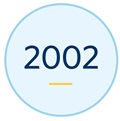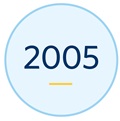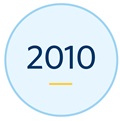A Look Back at Twenty Years of Ontario’s Wholesale Electricity Market
May 1, 2002 marked the opening of Ontario’s wholesale electricity market, fundamentally changing the way electricity is bought and sold in the province. It marked a turning point in the evolution of Ontario’s electricity system – opening the doors to new ways of meeting the province’s changing electricity needs. New forms of supply could now take the stage as part of a more dynamic, diverse and cost-effective system.
Twenty years later, Ontario’s electricity system is cleaner, more diverse and provides consumers with options almost unimaginable at the time. As we look back at these efforts to deliver a reliable, affordable and sustainable system, we also look toward continued transformation within the sector.

- Inception of the Independent Electricity Market Operator (IMO), formerly Central Market Operations of Ontario Hydro.

May 1, 2002 (Midnight EST) – Market Opening
- Official opening of Ontario’s wholesale electricity market. The first dispatch is sent out based on an Hourly Ontario Energy Price of $22.97/MWh.
- Ontario’s new market features 239 participants: 93 Local Distribution Companies, 89 Industrial Consumers, 19 Generators, 34 Wholesale Buyers/Sellers, 4 Transmitters

- More than 50 million people in Ontario and the northeastern United States are affected by the largest power outage in North American history. The IESO leads the provincial restoration effort, co-ordinating with sector partners to bring power back to Ontarians.

- Creation of the Ontario Power Authority (OPA) to manage long-term planning, securing supply contracts and offering energy efficiency programs.
- The IMO is renamed "Independent Electricity System Operator" through legislation.
- Record annual energy demand of 157 TWh.

- First wind farms join the market and connect to the provincial grid, marking the beginning of a broad effort to promote the development and integration of renewable generation in the IESO market.
- As the humidex reaches well into the 40s, electricity demand hits an all time high of 27,005 megawatts on August 1 at 5:00 p.m.

- Broad roll out of smart meters in homes and small businesses in Ontario begins. The IESO develops the centralized meter data repository to process consumption information for bills. In future, aggregated residential data is incorporated into demand forecasts.

- The Feed-in Tariff (FIT) and microFIT programs launch, promoting the broad adoption of renewable generation in the province.

- Launch of the Indigenous Energy Support Programs to promote Indigenous participation in community energy planning, renewable energy projects, and building of energy knowledge and awareness.
- The IESO begins centralized wind forecasting to support the reliable and efficient integration of wind generation in the province.
- Launch of Save on Energy-branded conservation programs for Ontario homes and business saving 16 TWh of electricity – enough to power 1.7 million Ontario homes for one year.

- Nanticoke Generating Station, Ontario’s last remaining coal power plant, closes completing the province’s transition to one of the cleanest electricity systems in the world.

- Energy storage enters the wholesale market to provide regulation service – a first for Ontario.

- The IESO and OPA merge, bringing together real-time system and market operations with long-term planning, conservation and supply procurement.
- First Demand Response Auction is held, allowing aggregated load to participate in the market. The DR Auction later transitions into a broader Capacity Auction to help meet year-to-year changes in system needs.

- High-level design and business case released for the Market Renewal Program – showing the net benefits of implementing market enhancements that are expected to total $700 million over the first 10 years.

- The IESO moves non-essential operations off-site as most staff work from home, maintaining operations throughout the COVID-19 pandemic.
- York Region Local Energy market launches – tapping into local energy assets to help meet local needs - while coordinating with the IESO’s provincial grid operations.

- Launch of the Resource Adequacy Framework – a competitive approach to securing supply needs for Ontario.

May 1, 2022
- 20th anniversary of the opening of the Ontario wholesale electricity market with more than 600 participants in the market, representing a diverse range of organizations.
Over the next 20 years, Ontario will see an unprecedented transformation of the electricity system, driven by growing customer choice, policy and the rapidly evolving pace of technology change.
As the market operator and system planner, the IESO will help drive and guide this energy transition. We are modernizing our markets and systems to ensure efficient use of the growing number of resources that supply Ontario’s homes and business. We will capitalize on innovation to enhance the reliability and affordability of the grid, and adapt to changing technologies, social and environmental trends.
We will develop a nimbler approach to managing our work as we continue to improve our organizational agility, evolving our culture, people, tools, and processes, in turn helping us broaden our relationships with employees, stakeholders and Indigenous communities.
Through it all, we will rely on the contributions of IESO employees, and to sector and market participants. With their contributions and support, we can realize the potential of our electricity future for the benefit of all Ontarians.
